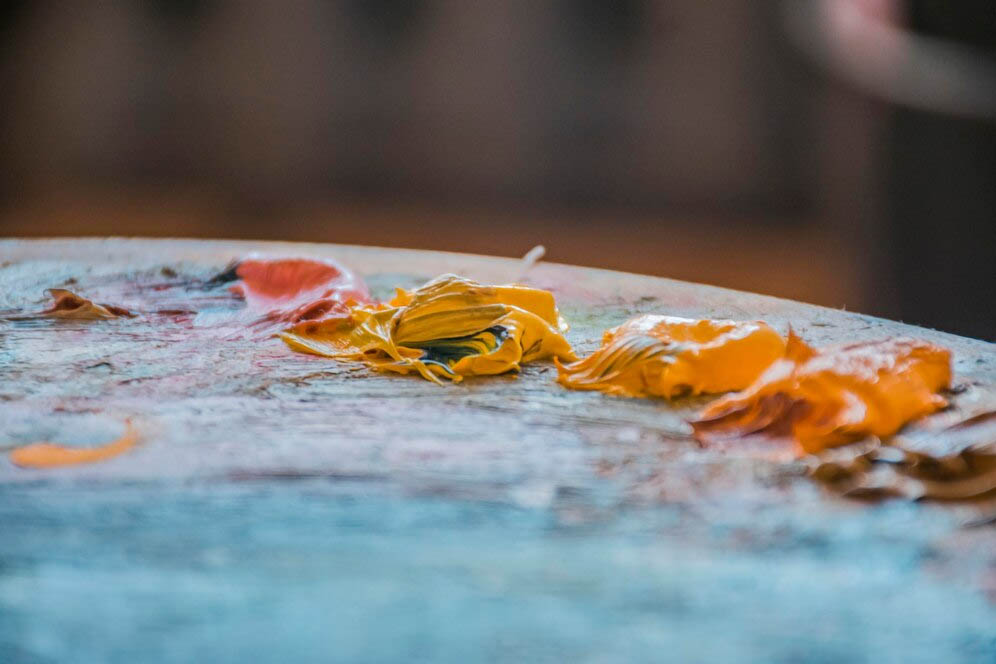Physical Address
304 North Cardinal St.
Dorchester Center, MA 02124
Physical Address
304 North Cardinal St.
Dorchester Center, MA 02124

Meta description: Wondering how long does it take an oil painting to dry? Discover the factors affecting drying time, typical timeframes, and expert techniques to manage the drying process effectively.
For many artists new to oil painting, one of the most perplexing aspects is the waiting game. Unlike acrylics that dry within hours, oil paintings follow their own mysterious timeline. So exactly how long does it take an oil painting to dry? The answer isn’t straightforward, as drying times can range from a few days to several months or even a year depending on various factors. This unpredictability can frustrate beginners and challenge even experienced painters when planning exhibition schedules or shipping artwork. Understanding the science behind oil paint drying and the variables that influence this process can help artists work more efficiently and avoid potentially disastrous mistakes with unfinished work.
When considering how long does it take an oil painting to dry, several key variables come into play:
The Oil Base Used Different oils have inherently different drying properties. Linseed oil, the most commonly used binder, dries relatively quickly compared to others. Walnut oil takes longer to dry but yellows less over time. Safflower and poppy oils are the slowest drying, sometimes taking weeks longer than linseed for comparable layers.
Paint Thickness Perhaps the most significant factor affecting drying time is the thickness of application. A thin glaze might be touch-dry within 24-48 hours, while impasto techniques with thick, textured paint can take weeks or months before even the surface is dry, with complete curing taking much longer.
Pigment Selection Interestingly, different colors dry at different rates. Earth tones like umbers and siennas contain natural drying agents and set faster. Cadmiums, cobalts, and titanium white tend to dry at moderate speeds, while organic reds and blacks can take significantly longer.
Environmental Conditions Temperature, humidity, and air circulation dramatically impact how long it takes for oil painting to dry:
Surface Preparation The absorbency of your painting surface affects drying time. An oil-primed canvas will keep paint wet longer than an acrylic-primed or absorbent gesso surface.
When answering the question “how long does it take an oil painting to dry?”, we need to distinguish between different stages of the drying process:
Touch Dry: 1-7 days The surface no longer feels tacky when lightly touched, but the paint remains soft and vulnerable to damage.
Dry to Handle: 1-3 weeks The painting can be carefully handled, moved, or transported, though the deeper layers are still curing.
Exhibition Ready: 1-3 months Safe to display without significant risk of damage, though still not fully cured.
Completely Cured: 6-12 months The entire paint film, from surface to substrate, has fully oxidized and polymerized. Only at this stage is varnishing truly safe.
It’s worth noting that paintings with multiple layers following the “fat over lean” principle may have different layers drying at different rates simultaneously. A complex oil painting with many glazes and layers might not be fully cured for years, though it can be safely handled much sooner.

For artists wondering how to manage how long does it take an oil painting to dry, these techniques can help:
Alkyd Mediums Adding alkyd-based mediums like Liquin or Galkyd can dramatically reduce drying time, sometimes allowing layers to become touch-dry overnight.
Thin Layering Technique Working in thin layers rather than thick applications allows each layer to dry more quickly before applying the next. This traditional approach not only speeds overall completion time but often creates more stable paintings.
Controlled Environment Creating optimal drying conditions with:
Siccatives and Driers Cobalt or manganese driers can be added in very small amounts to speed drying, though these should be used cautiously as they can affect color longevity and increase the risk of cracking.
Understanding how long it takes an oil painting to dry helps avoid these common pitfalls:
Premature Varnishing Applying varnish before a painting is fully cured traps solvents and oils underneath, leading to cloudiness, cracking, or peeling. Most experts recommend waiting 6-12 months before varnishing.
Violating “Fat Over Lean” When faster-drying lean layers are applied over slower-drying fat layers, the surface can dry while underneath remains wet, causing cracking as the lower layers continue to cure.
Stacking or Rolling Too Soon Transporting or storing paintings before they’re thoroughly dry can result in stuck canvases, imprints, or permanent damage to the paint surface.
Overuse of Drying Agents While tempting to speed the process, excessive use of driers can compromise the paint film’s integrity and cause premature aging effects.
Q: If I paint a portrait with thick impasto highlights, how long does it take for the oil painting to dry enough to ship?
A: For thick impasto work, allow at least 2-3 weeks for surface drying, but ideally 1-2 months before shipping. Use spacers in your packaging to prevent anything from touching the surface.
Q: Do all oil colors in the same painting dry at the same rate?
A: No. A painting with multiple colors will dry unevenly. Earth colors like raw and burnt umber might be touch-dry in 1-2 days, while titanium white might take 5-7 days, and certain reds or blacks could take even longer.
Q: How can I tell if my oil painting is dry enough to varnish?
A: Besides waiting the recommended 6-12 months, perform the fingerprint test in an inconspicuous corner: press firmly with your thumb. If the paint feels firm and doesn’t yield, show fingerprints, or feel tacky, it’s likely ready for varnishing.
So, how long does it take an oil painting to dry? As we’ve seen, the answer depends on multiple factors, from paint thickness and pigment selection to environmental conditions and techniques used. While thin layers might be touch-dry in days, complete curing takes months to a year for most oil paintings. By understanding these variables, artists can better plan their work, establish realistic timeframes for exhibitions or commissions, and ensure the longevity of their creations. Patience remains an essential virtue in oil painting, but with the right knowledge and techniques, artists can manage the drying process more effectively while preserving the rich, luminous qualities that make oil paint such an enduring medium.